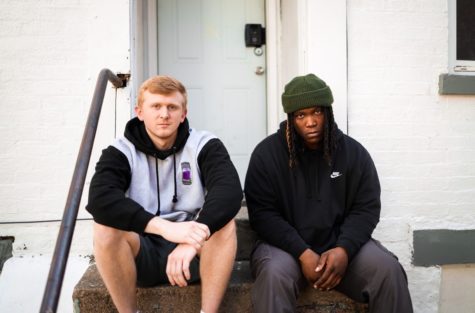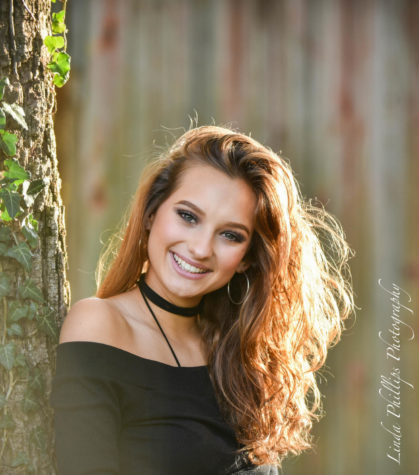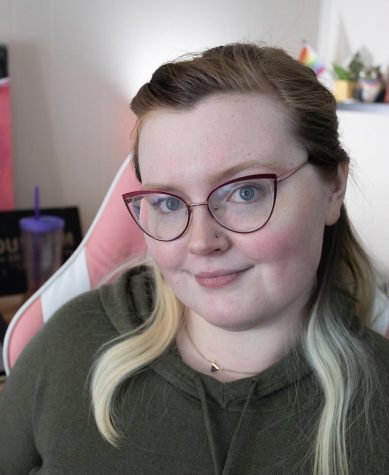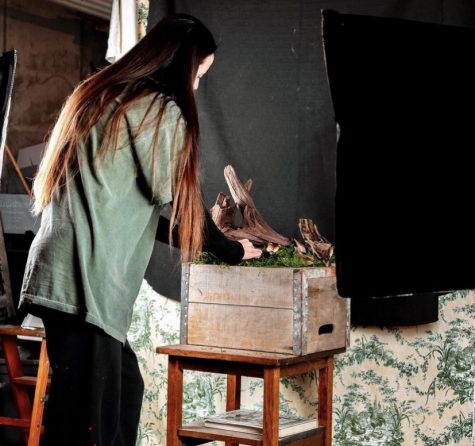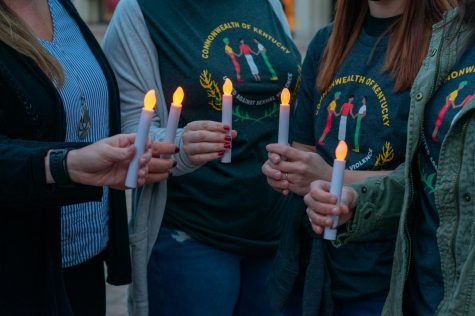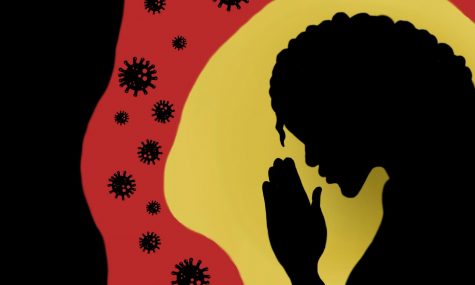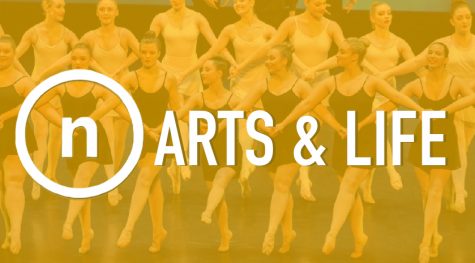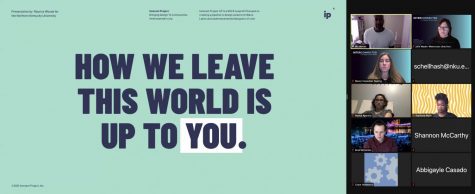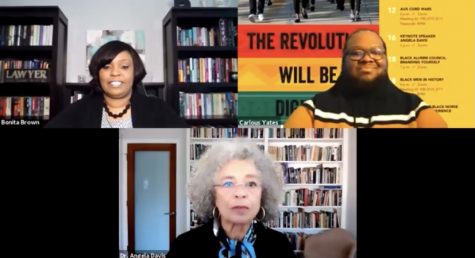Physics department collaborates with NASA
Carter Kring, a sophomore physics major, checks simulations daily to read the symbols received from the detector in the Cream experiment. The detector will journey to the International Space Station next year.
He fills a long thin balloon with helium so that only the bulb has expanded. The thin part of the balloon expands on its own during its journey into space. The balloon floats up into the sky and once it is fully expanded, it is as big as the University of Cincinnati’s Nippert Stadium. Dr. Scott Nutter has taught physics and worked in cosmic ray astrophysics at NKU since 2001, but perhaps even more impressive is his contribution to NASA. Nutter helps create objects equipped to withstand high altitudes. These balloons collect data in the atmosphere for about 10 to 15 days before falling back to earth. Nutter is involved with three experiments- Cream, Crest, and Helix. All three tests gather information from space. Cream and Crest are designed to detect and relay back different information from space. Helix will involve a rocket being flown into space but is still in the beginning stages due to funding. “I have to get into space with my instruments, well I should say my instruments get into space,” Nutter said, the most common of which is a high altitude balloon. “It’s a way to get above 99 and a half percent of the atmosphere.” A detector about the size of an SUV is attached to the bottom of the balloon, collecting the data that Nutter will study. Once the balloon completes its voyage, the detector detaches and parachutes back to Earth. Simulations allow Nutter to understand the information his instruments are sending back from space. Symbols have to be transcribed into meaning to comprehend exactly what the instrument is sending. “My students and I built parts of these, it’s all collaborative work with other institutions in the area,” Nutter said. Students work with Nutter in two areas, mechanical or simulation. Some of them have developed expertise in one rather than the other, and some have succeeded in both. An NKU graduate made tremendous impact on Cream a few years ago, which is influencing other universities today. Nutter attended a meeting at the University of Maryland this month to discuss the Cream project where he was able to share that work completed by the graduate student. This meeting contained collaborators from universities around the world to discuss and work together on one single project. NKU student and Nutter’s intern, Carter Kring, accompanied him at this meeting. In his five months on the job, the sophomore physics major has learned just how much work it is be a physicist. “It was really eye-opening how much work that goes into these projects,” Kring said regarding the meeting at the University of Maryland. “It was a collaboration meeting where he had probably 30 collaborators there, everybody working on different parts of the project. Some people were involved with the data analysis, some people were with simulation, some people with hardware that they actually had to build. It takes a whole lot of people to come together to make this one thing happen.” After graduation, Kring hopes to stay in research and attend grad school to receive a PhD in astrophysics. “The experience that I’m getting with this job is going to speak a lot of volumes,” Kring said. As a participant in Cream, Kring has been working on simulations for the sensor which will go up next year. The project is called Ice Cream because it is going to the International Space Station. There is one more balloon test in December which will be mandated by the University of Maryland. A recovery team will go to Antarctica to dig out the balloon detector from the ice. “The cool thing most people associate with my research is Antarctica,” Nutter said. “I’ve gone there three times because NASA now launches their high altitude balloons from Antarctica.” Nutter introduced the project to Kring, and he hopes to be a part of the recovery team. “I hope to be a part of that as someone who gets to go to Antarctica to recover the sensor,” Kring said. “I spoke with a lot of people in charge and got my name into the ring. They said they’ll keep in touch.” Nutter explained that his students have a profound impact on his research. “I like working with the students, having them in my lab,” Nutter said. “I couldn’t have done this without the student participation frankly. They’ve made tremendous contributions, they’re partners.” Kring is one student who has devoted time to work with Nutter this semester, but he certainly isn’t the only one. Nutter had four previous students who were extremely involved over the last five or six years. All four have graduated- one working in a career directly related to his work with Nutter, another decided to travel, and one student is studying physics at the University of Cincinnati. Jessica Kerby is in her first year of graduate school after completing her bachelor’s degree from NKU in 2014. She spent two years working with Nutter on the simulation aspect of the NASA project called Crest. While at NKU, Kerby started as an hourly researcher trying to understand the bigger picture of the project. She worked to correct a time delay caused by different lengths of wire sending messages about measurements associated with the balloon. Because of the different lengths of wire, each measurement took time to travel down each wire, causing an interruption for which needed accounted. “I made a schematic for what the time delay should be,” Kerby said. “It was a program that we kept in the background so whenever we looked at data, the times would be fixed and we got the true times.” It was an overview of real world experience for Kerby. She said research will be a significant part of her future. Kerby stated her experience with Nutter was motivational. She said he provided constructive criticism as a professor and his guidance helped her improve. “Dr. Nutter is one of the coolest professors,” Kerby said. “When they make that kind of impression, they keep you fighting the good fight.”



